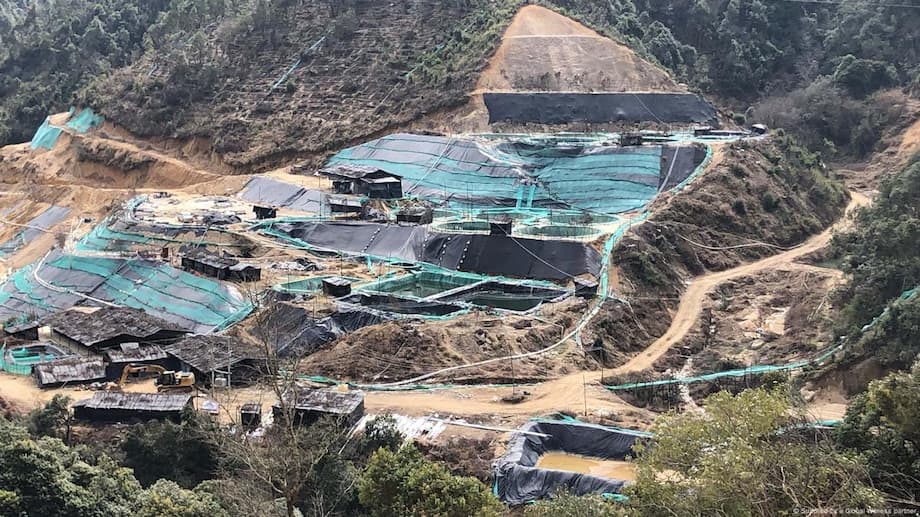US Interest in Kachin Rare Earths: A New Front in the Global Minerals Race
The United States is reportedly considering a bold move to secure access to rare earth minerals in Myanmar’s Kachin State, a region at the heart of both a civil war and a global scramble for critical resources. This development comes amid growing concerns over China’s near-monopoly on rare earths—elements essential for everything from electric vehicles and wind turbines to advanced military technologies. While the prospect of US involvement raises hopes for breaking China’s stranglehold, it also stirs deep fears among local communities and environmental activists about the potential for further conflict and ecological devastation.
- US Interest in Kachin Rare Earths: A New Front in the Global Minerals Race
- Why Is Kachin State So Important for Rare Earths?
- US Policy Shift: Seeking Alternatives to China
- The Human and Environmental Cost of Rare Earth Mining
- Global Supply Chains: Who Really Benefits?
- Geopolitical Stakes: Can the US Break China’s Monopoly?
- What’s Next for Kachin and the World’s Rare Earths?
- In Summary
Rare earth elements (REEs) are a group of 17 chemically similar metals with unique magnetic, conductive, and thermal properties. They are indispensable for modern technology, powering everything from smartphones and MRI machines to the permanent magnets in electric car motors and wind turbines. Among these, heavy rare earth elements (HREEs) like dysprosium and terbium are especially prized for their role in high-performance magnets and batteries.
Why Is Kachin State So Important for Rare Earths?
Kachin State, located in northern Myanmar along the border with China, has emerged as one of the world’s most significant sources of heavy rare earths. Since the 2021 military coup in Myanmar, mining activity in Kachin has surged, largely unregulated and often illegal. The region’s mineral-rich soils have attracted not only local militias and the ruling military junta but also Chinese companies eager to secure supplies for their vast manufacturing sector.
According to Global Witness, Myanmar’s exports of heavy rare earths to China more than doubled between 2021 and 2023. By 2024, Myanmar had become China’s largest external supplier of these critical minerals, accounting for about 40% of China’s imports of key elements like dysprosium and terbium. The trade is worth an estimated $1.4 billion annually, but the profits rarely benefit local communities.
Most of the mining takes place in areas controlled by the Kachin Independence Army (KIA) or military-aligned militias. The KIA, an ethnic armed group fighting for autonomy, seized control of the Chipwe-Pangwa mining belt in late 2024, further complicating the region’s already tangled web of alliances and rivalries.
China’s Role: Strategic Stockpiling and Environmental Fallout
China’s dominance in the rare earth supply chain is not accidental. The country controls nearly 90% of global rare earth processing capacity and has increasingly outsourced the dirtiest and most environmentally damaging extraction to Myanmar. Chinese companies, often operating through local proxies, have expanded mining operations by over 40% in recent years, turning once-pristine forests into landscapes scarred by pits, chemical ponds, and barren soil.
Chinese customs data shows a 70% surge in rare earth imports from Myanmar in 2023, with shipments reaching over 34,000 metric tons. Analysts warn that China is stockpiling these minerals, potentially to use them as leverage in future geopolitical disputes or sanctions battles with the West.
US Policy Shift: Seeking Alternatives to China
The US has long recognized its vulnerability in the rare earths supply chain. Nearly all of America’s rare earth imports are processed in China, making the country dependent on a strategic rival for materials critical to its defense and technology sectors. In recent months, the Trump administration has reportedly considered a partnership with the KIA to access Kachin’s rare earth deposits, bypassing both the military junta and Chinese intermediaries.
According to Reuters, proposals discussed in July 2025 included direct talks with the KIA, brokering a peace deal between the KIA and the junta, or working with regional allies like India to process the minerals. The goal: reduce US reliance on China, secure a stable supply of rare earths, and potentially weaken China’s grip on the global market.
Adam Castillo, former head of the US Chamber of Commerce in Myanmar, described Kachin’s minerals as “China’s golden goose” and urged the US to cooperate with the KIA. Indian companies have also shown interest, with IREL (India) Ltd. visiting Kachin in late 2024 to explore mining deals.
Logistical and Political Hurdles
Despite the strategic logic, experts caution that any US effort to extract rare earths from Kachin faces daunting obstacles. The region’s infrastructure is poor, with few roads and most mines located near the Chinese border. Swedish author and Myanmar expert Bertil Lintner called the plan “totally crazy,” noting that China could easily block any attempt to transport minerals overland to India or elsewhere.
Moreover, the US has avoided direct engagement with Myanmar’s military junta since its 2021 coup, citing human rights abuses and ongoing violence. Recent moves to lift sanctions on some junta allies have raised eyebrows but do not signal a broader policy shift, according to US officials.
The Human and Environmental Cost of Rare Earth Mining
While the geopolitical chess game plays out, the people of Kachin State bear the brunt of rare earth mining’s devastating impacts. The extraction process, known as in-situ leaching, involves injecting chemicals like ammonium sulphate and oxalic acid into the ground to dissolve rare earth elements, which are then pumped to the surface. This method is cheap and efficient but leaves behind toxic waste, contaminated water, and barren landscapes.
Local activists and watchdog groups have documented widespread environmental destruction:
- Rivers and streams have turned red or milky blue from chemical runoff, making water unsafe for drinking, fishing, or irrigation.
- Soil contamination has reduced crop yields and killed livestock, threatening food security.
- Forests have been cleared for mining sites, destroying habitats and biodiversity hotspots.
- Health problems, including skin diseases, respiratory issues, and organ damage, are on the rise among workers and villagers.
“Rare earth mining brings instant income, but it destroys our land when done wrong,” said Seng Ja, a 24-year-old Kachin activist. “Kachin has suffered from war for years, and the SAC [military junta] lets Chinese businesses take our resources, leaving polluted rivers and empty fields. We need assistance that protects our environment and people.”
“The U.S. must not follow the SAC’s destructive path. If they want to help Kachin, they should support responsible mining, follow minimum environmental standards, and push for sustainable solutions—not just take our resources and leave a wasteland.”
— Seng Ja, Kachin activist
Social Upheaval and Conflict Financing
The rare earth boom has also fueled social problems in Kachin. Mining sites have become magnets for gambling, drug use, and crime. Workers, often lacking protective gear, suffer frequent injuries and illnesses. The influx of outside laborers and the rapid flow of money have disrupted traditional communities and deepened inequality.
Perhaps most troubling, the profits from rare earth mining are helping to finance Myanmar’s ongoing civil war. The KIA imposes a 20% tax on mining operations in its territory to fund its resistance against the junta. Meanwhile, the military and its allied militias use mining revenues to buy weapons and maintain control. As one local resident put it, “Every group is forced to use resources to survive. The SAC and Kachin rebel leaders know the environmental damage but don’t care—the war costs are too high, and rare earth money is too tempting to ignore.”
Global Supply Chains: Who Really Benefits?
The rare earths extracted from Kachin do not stay in Myanmar. They are exported—mostly illegally—to China, where they are processed and incorporated into products for global brands like Tesla, Volkswagen, Toyota, and Siemens. Germany, for example, is a major importer of permanent magnets made with Myanmar’s rare earths, though most companies claim to use recycled materials or rely on opaque supply chains.
This global demand creates a powerful incentive for continued mining, regardless of the local consequences. International boycotts of Myanmar’s junta have had little effect on the rare earth trade, as Chinese firms operate with impunity and Western companies struggle to trace the origins of their materials.
Calls for Responsible Sourcing and Regulation
Environmental groups and local activists are calling for urgent action to halt unregulated mining in Myanmar until effective safeguards are in place. Recommendations include:
- Stricter government regulation and enforcement of environmental standards
- Supply chain due diligence by companies sourcing rare earths
- International sanctions on firms involved in environmental destruction and human rights abuses
- Support for alternative technologies and recycling to reduce demand for newly mined rare earths
- Inclusion of indigenous and local communities in decision-making about mining projects
Without such measures, experts warn, Myanmar’s toxic mines will continue to expand, leaving behind devastated landscapes and communities with no means of livelihood.
Geopolitical Stakes: Can the US Break China’s Monopoly?
The US interest in Kachin’s rare earths is part of a broader global scramble for critical minerals. As countries race to secure supplies for the green energy transition and advanced technologies, competition is intensifying—not just between the US and China, but also among regional powers like India and the European Union.
China’s vertical integration of the rare earth supply chain—from mining to processing to manufacturing—gives it enormous leverage over global markets. Efforts by the US and its allies to build independent supply chains have so far struggled to match China’s scale and efficiency. New mines in the US, Canada, and Australia are in development, but face their own environmental and regulatory hurdles.
Some analysts argue that supporting Kachin independence could help the US secure rare earth supplies, weaken China’s influence, and bring economic benefits to the Kachin people. Others warn that such a move risks further destabilizing Myanmar and fueling conflict. As The National Interest notes, the US policy of supporting Myanmar’s territorial integrity may inadvertently prolong the civil war and strengthen China’s monopoly.
What’s Next for Kachin and the World’s Rare Earths?
The future of Kachin’s rare earths remains uncertain. The region is caught between powerful forces: a military junta desperate for revenue, ethnic militias fighting for autonomy, Chinese companies seeking resources, and now, potentially, US and Indian interests looking for alternatives to China. Meanwhile, local communities continue to suffer the consequences of unregulated mining and ongoing conflict.
For the US and other countries seeking to secure critical minerals, the lesson from Kachin is clear: breaking China’s monopoly cannot come at the expense of human rights, environmental sustainability, and local livelihoods. The global race for rare earths must be guided by principles of transparency, accountability, and respect for the people and ecosystems most affected by extraction.
In Summary
- The US is considering partnerships in Myanmar’s Kachin State to access rare earth minerals and reduce reliance on China.
- Kachin is a major global source of heavy rare earths, but mining is largely unregulated and environmentally devastating.
- China dominates the rare earth supply chain, importing vast quantities from Myanmar and stockpiling resources for strategic leverage.
- Local communities in Kachin suffer from pollution, health problems, and social upheaval linked to mining and conflict.
- Profits from rare earth mining finance both the military junta and ethnic militias, fueling Myanmar’s civil war.
- Experts urge responsible sourcing, strict regulation, and inclusion of local voices to prevent further environmental and social harm.
- The global scramble for critical minerals risks repeating the mistakes of the fossil fuel era unless urgent reforms are made.












